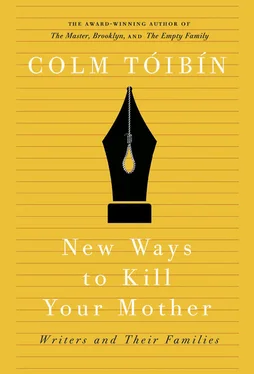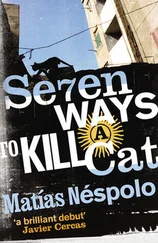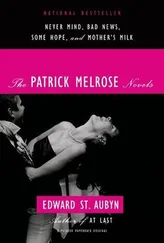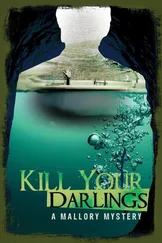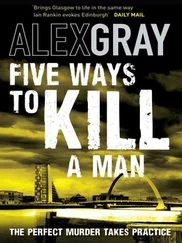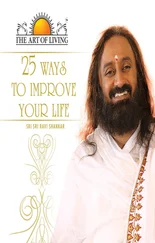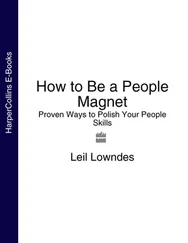They had known one another for fifty-five years. During the war, George had often listened to his broadcasts ‘in a humorous, half-conspiratorial sort of way’. Now they sat in silence. When Anne Yeats arrived she could feel the affection between them, but neither said a word. There is a wonderful photograph of them in the hotel that day, Pound gazing at George fondly, almost adoringly, and she, an old lady wearing glasses and a battered hat, taking him in, her expression placid and candid and wise.
When she died in 1968, she was buried in the grave with her husband’s bones, or others like them, under Ben Bulben in Sligo in the country she’d lived in for more than half a century. Her husband had been, as Frank O’Connor put it, ‘most fortunate in his marriage’.
New Ways to Kill Your Mother: Synge and His Family
In 1980, having been evicted from a flat in Hatch Street in the centre of Dublin, I was, by accident, offered temporary accommodation around the corner at No. 2 Harcourt Terrace. The house, three storeys over basement, was empty, having recently been vacated by its elderly inhabitant. It was early April when I moved in and the cherry tree in the long back garden was in full blossom. Looking at it from the tall back windows of the house, or going down to sit in the garden under its shade, was a great pleasure. The thought might have occurred to me that whoever had just sold this house could be missing it now, but I don’t think I entertained the thought for very long.
The aura of the previous inhabitant of this house, in which I ended up living for almost eight years and where I wrote most of my first two books, appeared to me sharply only once. I was putting books in the old custom-made bookshelves in the house when I noticed a book hidden in a space at the end of a shelf where it could not be easily seen. It was a hardback, a first edition of Louis MacNeice’s Springboard: Poems 1941–1944 . I realized that these shelves must have, until recently, been filled with such volumes, and that the woman who had left this house and had gone, I discovered, to a nursing home, must have witnessed a lifetime’s books being packed away, the books that she and her husband had collected and read and treasured. Books bought perhaps the week they came out. All lost to her now, including this one, which gave me a sense of her as nothing else did.
I asked about her. Her name was Lilo Stephens. She was the widow of Edward Stephens, the nephew of J. M. Synge. In 1971 she had arranged and introduced Synge’s My Wallet of Photographs . Edward Stephens, who died in 1955, was the son of Synge’s sister Annie. Born in 1888, when Synge was seventeen, he was aged twenty when his uncle died in 1909. Later, he became an important public servant and a distinguished lawyer. In 1921 he accompanied Michael Collins to London for the negotiations with the British that led to the Treaty which set up the Irish Free State. He was subsequently secretary to the committee that drew up the Irish constitution and thereafter became assistant registrar to the Supreme Court, and finally registrar to the Court of Criminal Appeal.
In 1939 on the death of his uncle Edward Synge, who had not allowed scholars access to Synge’s private papers, Edward Stephens became custodian of all Synge’s manuscripts. He began working on a biography of his uncle, which would partly be a biography of his family. ‘I see J. M. and his work as belonging much more to the family environment,’ he wrote, ‘than to the environment of the theatre.’ He had been close to his uncle, having been brought up in the house next door to him and spent long summer holidays in his company, and been taught the Bible by Synge’s mother, as Synge had. But, in Synge’s lifetime, not one member of his family had seen any of his work for the theatre. At his uncle’s funeral, Edward Stephens would have had no reason to recognize any of the mourners who came from that side of his uncle’s life. For his family, Synge belonged fundamentally to them; he was, first and foremost, a native of the Synge family.
‘It was [Synge’s] ambition,’ he wrote,
to use the whole of his personal life in his dramatic work. He ultimately achieved this… by dramatising himself, disguised as the central character or, in different capacities, as several of the leading characters, in some story from country lore or heroic tradition. It is in this sense that his dramatic work was autobiographical and that the outwardly dull story of his life became transmuted into the gold of literature.
In his work, Edward Stephens ‘transcribed in full,’ according to Andrew Carpenter in My Uncle John ,
many family papers dating back to the eighteenth century; he copied any letters, notes, reviews, articles, fragments of plays, or other documentary evidence connected, even remotely, with Synge. He also recounted, with a precision which is truly astonishing, the events of Synge’s life: the weather on particular days, the details of views Synge saw on his bicycle rides or walks and the history of the countryside through which he passed, the backgrounds of every person Synge met during family holidays, the food eaten, the decoration of the houses in which Synge lived, the books he read, his daily habits, his conversations, his coughs and colds — and those of other members of the family.
By 1950 the typescript was in fourteen volumes, containing a quarter of a million words. On Stephens’s death in 1955, it had still not been edited for publication.
Lilo Stephens inherited the problem of the Synge estate. Out of her husband’s work — ‘the hillside,’ as one reader put it, ‘from which must be quarried out the authoritative life of Synge’ — two books came. Lilo Stephens made her husband’s work available to David Greene, who published his biography in 1959, naming Edward Stephens as co-author. Later, in 1973, Andrew Carpenter would thank her ‘for her patience, enthusiasm and hospitality’ when he edited her husband’s work to a book of just over two hundred pages, My Uncle John . Lilo Stephens had also inherited Synge’s papers, which had been kept for years in No. 2 Harcourt Terrace as her husband worked on them. In 1971 Ann Saddlemyer would thank her for first suggesting the volume Letters to Molly and providing ‘the bulk of the letters as well as much background material’. Edward Stephens had purchased these letters from Molly Allgood so that they would be safe. Finally, Lilo Stephens ensured the safety of Synge’s entire archive by moving it from Harcourt Terrace to Trinity College, Dublin, where it rests.
Synge’s family remains of considerable interest, either because of the apparent lack of any influence on his work, or because they may or may not hold a key to his unyielding and mysterious genius. He seemed in his concerns and beliefs to have nothing in common with them — he stated that he never met a man or a woman who shared his opinions until he was twenty-three — and yet, for a great deal of his adult life, he lived with them and depended on them. Any version of his life and work has to take his family into account and understand the idea, in Edward Stephens’s words, ‘that the context of his life… was quite different from any other writer of the literary movement. I tried to create a picture of a class or group in Irish society that has almost vanished.’
If a writer were in the business of murdering his family, then the Synges, with their sense of an exalted and lost heritage and a strict adherence to religious doctrine added to dullness, would have been a godsend. Synge’s great-grandfather, Nicholas Grene tells us in his essay on Synge and Wicklow in Interpreting Synge: Essays from the Synge Summer School 1991–2000 , ‘owned not only Glanmore [in County Wicklow], with its fifteen hundred acres of demesne including the Devil’s Glen, but Roundwood Park as well, an estate of over four thousand acres’. His grandfather, however, managed to lose most of this property, a portion only of which was bought back by Synge’s uncle. Synge’s father, who became a barrister, died when Synge was one year old. He left a widow, four sons, a daughter and four hundred pounds a year. The first three sons were solid citizens, becoming a land agent, an engineer and a medical missionary to China respectively. The daughter married a solicitor. The youngest, it was presumed, despite his solitary nature and regular illnesses, would eventually find a profession to suit his family, if not his temperament.
Читать дальше
